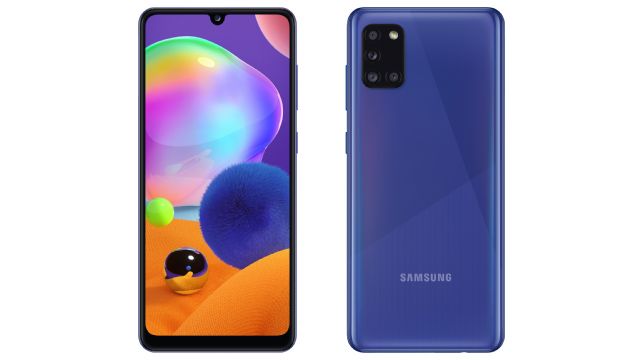
Last year, the smartphone that sold the most in the domestic smartphone market was the’Galaxy A31′, an entry-level LTE phone. The’Galaxy Note 20′ series of strategic 5G smartphones released in the second half of the year ranked second and third.
On the 18th, counterpoint research, a global market research firm, revealed that the smartphone that sold last year in Korea was the’Galaxy A31′, an LTE-only phone, not a 5G phone.
The Galaxy A31, launched in May of last year, has a quad camera that supports close-ups and a 5000mAh large-capacity battery, and is a low-end phone with a strong point of high-end cost performance, such as Samsung Pay. At the time, the factory price was 300,000 won.
Counterpoint Research explained that it was well driven by Samsung LTE user-centered replacement demand, which felt burdened by the 5G plan transition, and became an annual million seller in 2020.
‘Galaxy Note 20 Ultra’ and’Galaxy Note 20′ ranked second and third in domestic smartphones that sold the most last year.

Among the top 10 best sellers in the domestic smartphone market, Samsung products were 7 out of 10. The remaining three products were Apple.
Among the’iPhone 12′ series, Apple’s first 5G smartphone released last year,’iPhone 12 Pro’ ranked 9th, while’iPhone 11′ and’iPhone SE 2020′ ranked 4th and 5th respectively.
Lee Yun-jung, an analyst at Counterpoint Research, said, “It seems that the A-series played a big role in helping Samsung to maintain solid performance amid various adverse conditions last year.” Samsung and Apple are expected to strengthen their position this year. In particular, Samsung strengthened its attack on the Galaxy S21 series in March-April, when the contract period for existing users of the old model ends, and expanded its line-up of various foldable phones. We will try to differentiate ourselves.”
He added, “If we secure a monopoly position in the mid- to low-end market by strengthening the A-series, we can expect more meaningful results this year.”
Meanwhile, the domestic smartphone market last year was found to have decreased by 6% compared to the previous year due to economic uncertainty amid the corona spread and the aftermath of shrinking consumer sentiment. The market showed a gradual recovery, led by Apple’s mid-to-low-end model lineup, but it was on an annual basis.
It was analyzed that the proportion of 5G smartphones last year was 46%, which increased significantly from the level of 26% last year and entered the stage of popularization.

In the domestic smartphone market last year, Samsung Electronics maintained its unrivaled No. 1 position with 65% market share. Although the Galaxy S20 series recorded sluggish sales compared to expected, it was found to be slightly above the previous year’s level due to the Galaxy Note 20 series’ counterattack in the second half of the year along with the continued sales of the Galaxy A series throughout the year.
Apple recorded a 20% market share, up 2 percentage points over the previous year, thanks to strong sales of iPhone SE released in May last year, continued solid demand for the old iPhone 11 series, and strong sales of the iPhone 12 series released in the fourth quarter.
LG recorded a 13% market share, down 3 percentage points from the previous year, as flagship models such as Velvet and Wing did not show clear results in mid- to low-end models.
Related Articles

Samsung phone, online sales’legging’ in India…3rd → 2nd

Xiaomi rises first in the Russian online smartphone market in the fourth quarter of last year

Samsung Phone, iPhone’s’Garden’ in Japan in 7 Years with Double Digit Share

‘Huawei vs. Samsung’, the 2nd round of foldables has just risen

Looking at the share of the domestic smartphone market by price range, the share of sales under $400 accounted for 41%, an increase of 7 percentage points compared to 2019, while the share of sales over $800 fell 6 percentage points to 32%.
Counterpoint Research analyzed that it was last year when consumers who preferred entry-level smartphones amid the coronavirus outbreak stood out.
